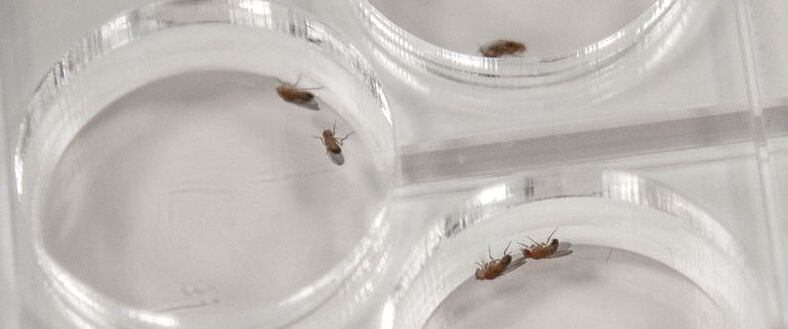Research
'Somewhere, something incredible is waiting to be known'
The goal of our lab is to understand how the brain
chooses between competing drives
In life, we often experience situations where we are forced to prioritise one goal over another. In nature, this could mean an animal having to choose between eating or escaping from a predator. How does the brain select the most appropriate action for each situation? We know that cues conveying external information (e.g., access to food, potential dangers) and internal state (e.g., fear, hunger) guide behavioural choices. However, how the brain prioritises specific actions remains unknown.
Our lab addresses this fascinating question using the fruit fly model, Drosophila. Fruit flies exhibit complex behaviours that are controlled by a relatively small brain. Thanks to sophisticated tools available in the fruit fly, we can interrupt specific genes, as well as visualise and manipulate individual neurons with great resolution. With these tools, we can study how the fly brain responds when there are conflicting options available, and how it chooses amongst them.
By studying how the brain makes decisions at a genetic, cellular and circuit level, in an accessible experimental system, we aim to reveal fundamental principles underlying behavioural choices that might be present across species.
Some of the techniques we use in the lab:
Genetics
Immunohistochemistry
Molecular biology
Neural tracing
Optogenetics/thermogenetics
Two-photon live imaging
Behavioural assays
Genetics
Immunohistochemistry
Molecular biology
Neural tracing
Optogenetics/thermogenetics
Two-photon live imaging
Behavioural assays


